High-Frequency Vibration from Hand-Held Impact Wrenches and Propagation into Finger Tissue †
Abstract
:1. Introduction
2. Method
2.1. Measurements
2.2. Data Analysis
3. Results
4. Discussion
Author Contributions
Funding
Informed Consent Statement
Data Availability Statement
Conflicts of Interest
References
- ISO 5349-1:2001; Mechanical Vibration—Measurement and Evaluation of Human Exposure to Hand-Transmitted Vibration—Part 1: General Requirements. ISO (the International Organization for Standardization): Geneva, Switzerland, 2001.
- Dandanell, R.; Engström, K. Vibration from riveting tools in the frequency range 6 Hz–10 MHz and Raynaud’s phenomenon. Scand. J. Work Environ. Health 1986, 12, 338–342. [Google Scholar] [CrossRef] [PubMed]
- Gerhardsson, L.; Ahlstrand, C.; Ersson, P.; Gustafsson, E. Vibration-induced injuries in workers exposed to transient and high frequency vibrations. J. Occup. Med. Toxicol. 2020, 15, 18. [Google Scholar] [CrossRef] [PubMed]
- Johannisson, P.; Lindell, H. Definition and Quantification of Shock/Impact/Transient Vibrations. arXiv 2022, arXiv:2211.08999. [Google Scholar]
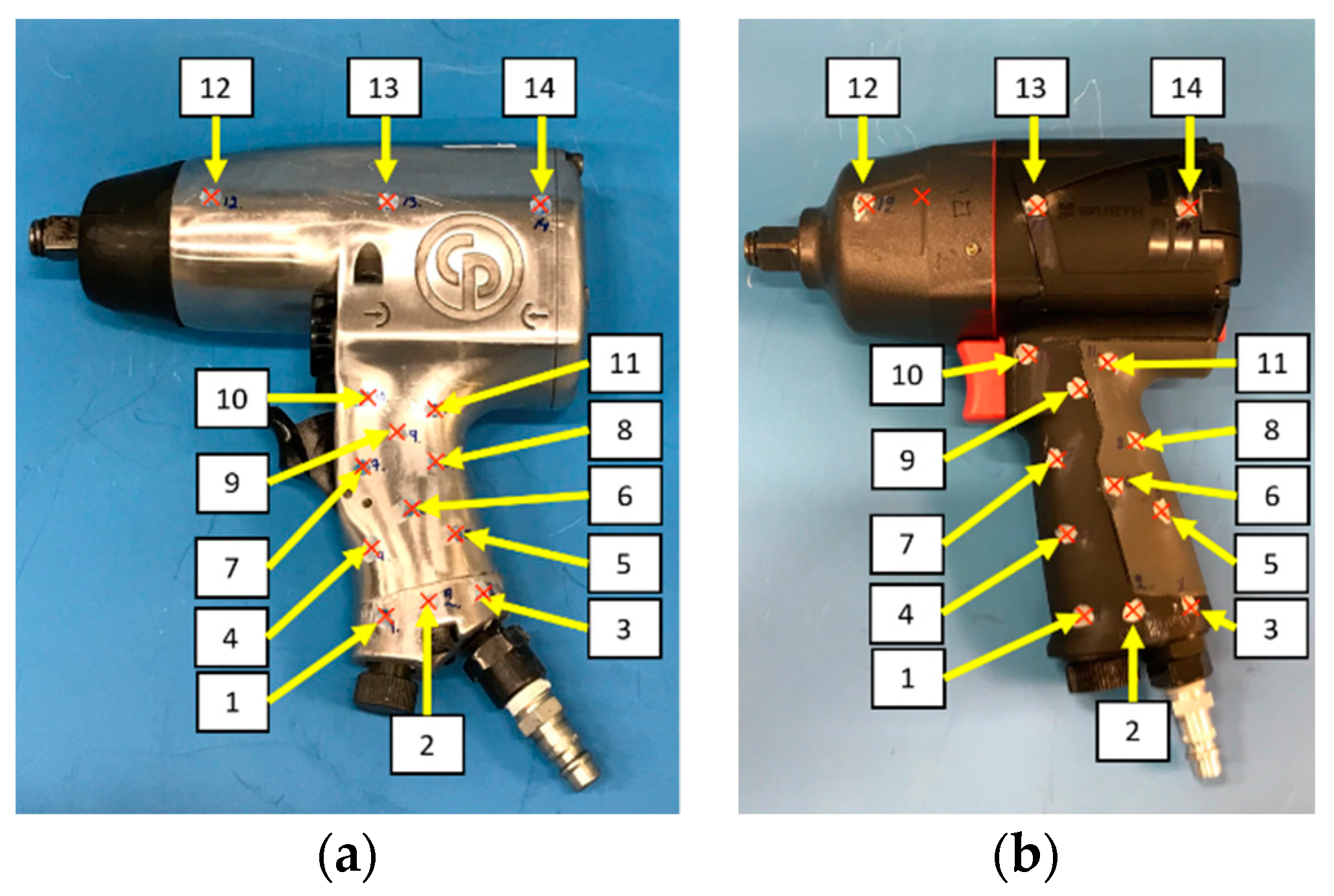
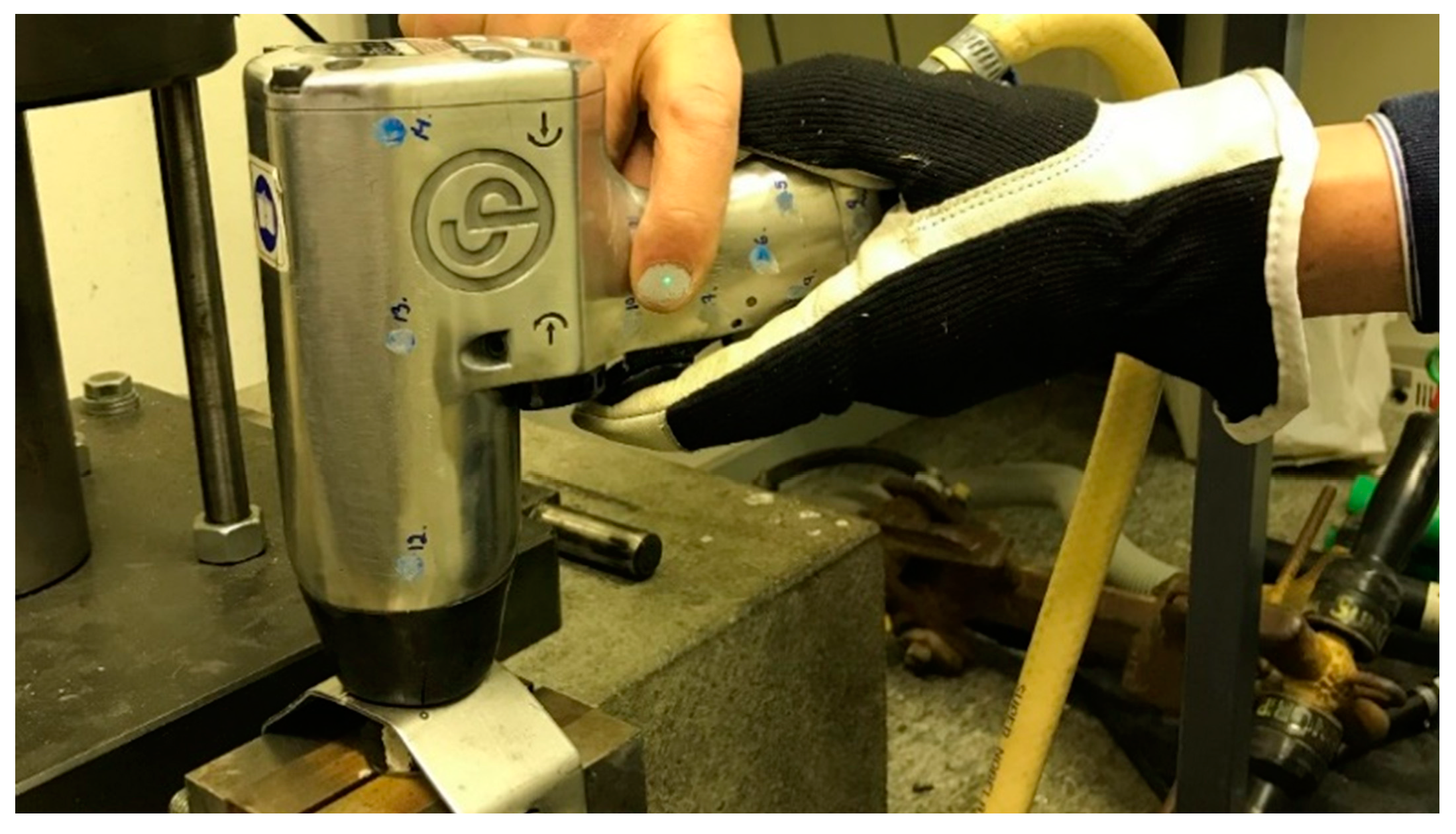
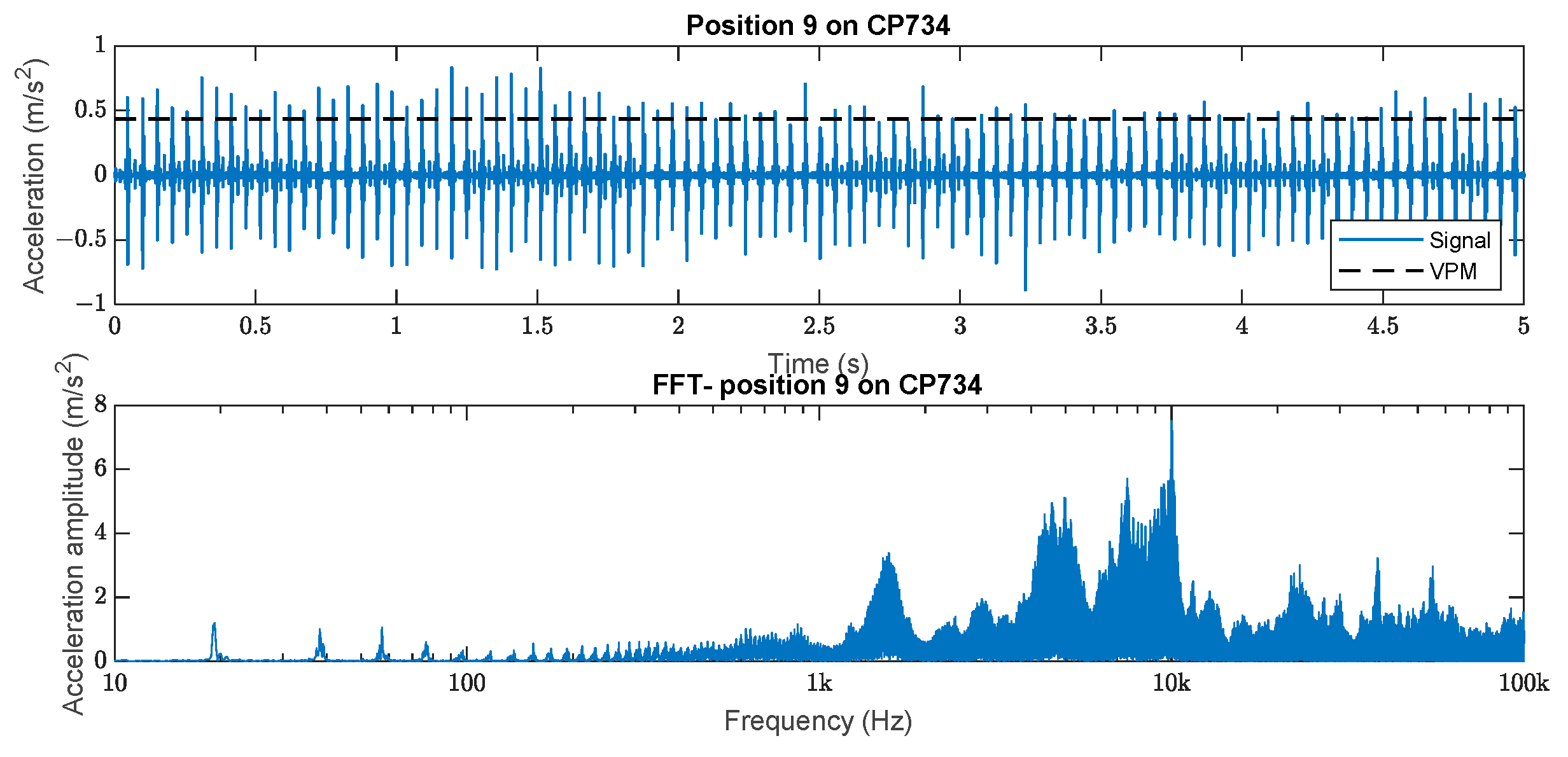
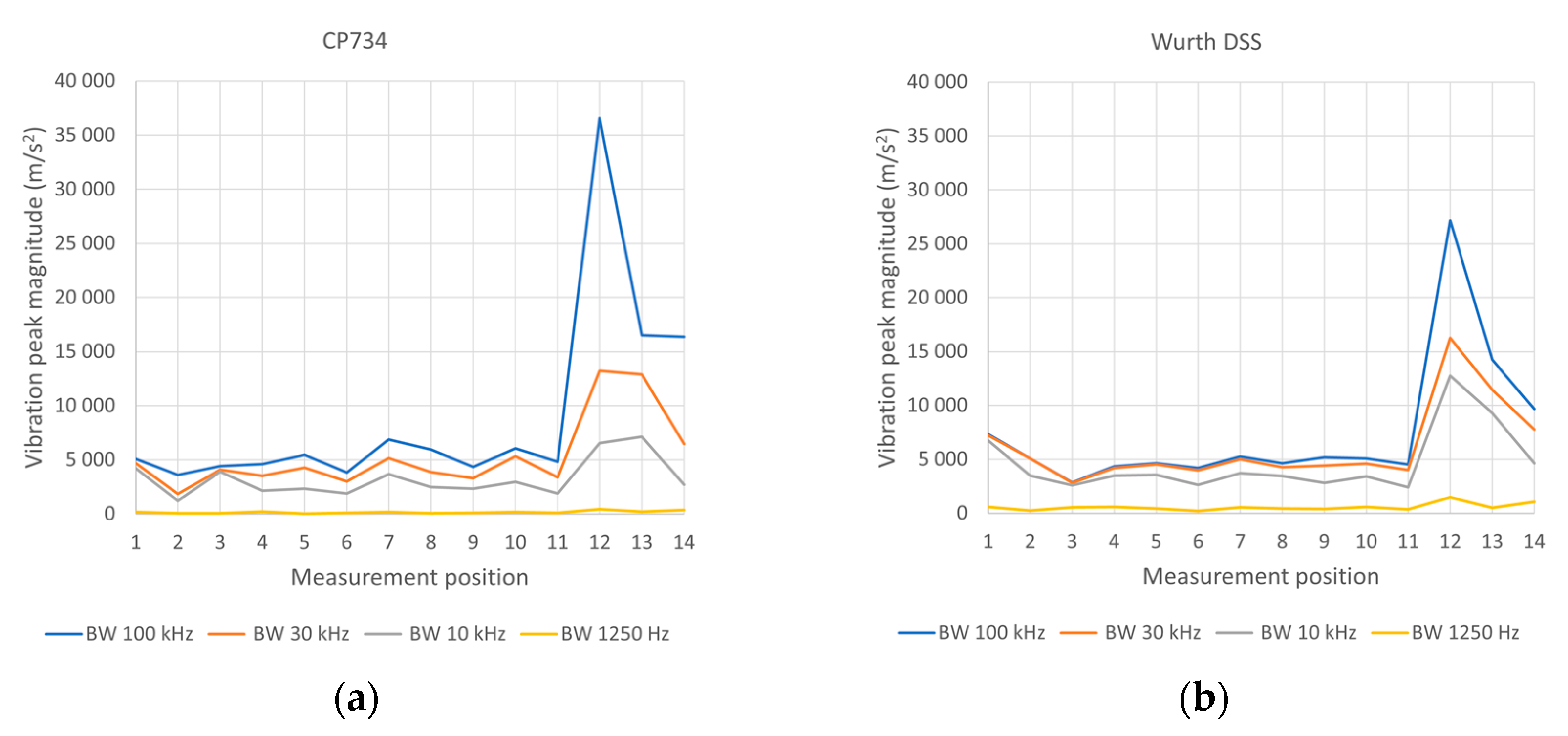
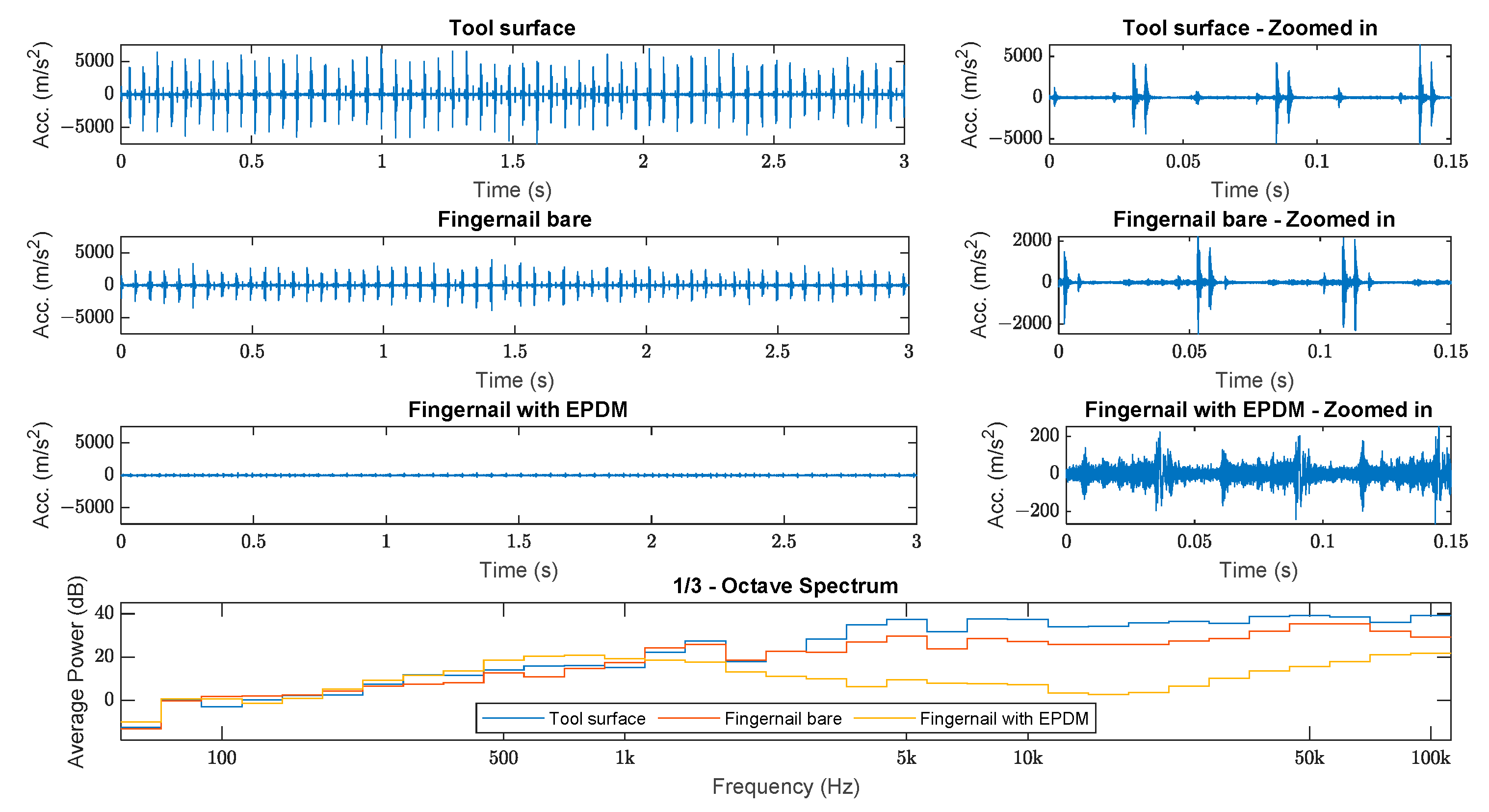
Disclaimer/Publisher’s Note: The statements, opinions and data contained in all publications are solely those of the individual author(s) and contributor(s) and not of MDPI and/or the editor(s). MDPI and/or the editor(s) disclaim responsibility for any injury to people or property resulting from any ideas, methods, instructions or products referred to in the content. |
© 2023 by the authors. Licensee MDPI, Basel, Switzerland. This article is an open access article distributed under the terms and conditions of the Creative Commons Attribution (CC BY) license (https://creativecommons.org/licenses/by/4.0/).
Share and Cite
Grétarsson, S.L.; Lindell, H. High-Frequency Vibration from Hand-Held Impact Wrenches and Propagation into Finger Tissue. Proceedings 2023, 86, 10. https://doi.org/10.3390/proceedings2023086010
Grétarsson SL, Lindell H. High-Frequency Vibration from Hand-Held Impact Wrenches and Propagation into Finger Tissue. Proceedings. 2023; 86(1):10. https://doi.org/10.3390/proceedings2023086010
Chicago/Turabian StyleGrétarsson, Snævar Leó, and Hans Lindell. 2023. "High-Frequency Vibration from Hand-Held Impact Wrenches and Propagation into Finger Tissue" Proceedings 86, no. 1: 10. https://doi.org/10.3390/proceedings2023086010
APA StyleGrétarsson, S. L., & Lindell, H. (2023). High-Frequency Vibration from Hand-Held Impact Wrenches and Propagation into Finger Tissue. Proceedings, 86(1), 10. https://doi.org/10.3390/proceedings2023086010





